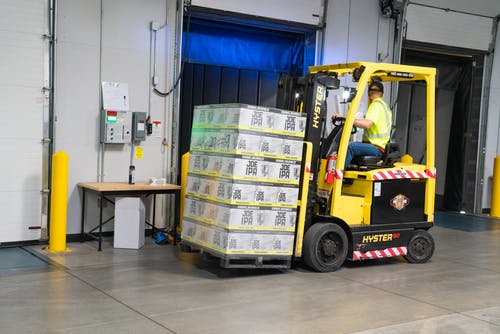Posted: Jan 29, 2019

According to the 2019 Direct-to-Consumer (DtC) Wine Shipping Report, over 6 million cases of domestic U.S. wine were shipped DtC in 2018 (up 9% over 2017).
The report, which examines wine shipments from wineries to consumers in the United States is produced jointly by the digital compliance company ShipCompliance by Sovos, and the wine industry's digital statistic producer, Wines Vines Analytics. The report covers all of 2018 and notes that at $3 billion, DtC was up almost 12% over 2017—53% since 2015 and 6 times larger than 2011.
At $39.70/bottle the average price per bottle shipped increased by 2.4% over 2017. Despite the rising price average, the report claims, “…the popularity of high-end wines accelerated, with wines priced at $100 or more increasing 18% in volume.”
While price increases generally coincided with increased sales volume, that was not true for a region where its wine prices have been going higher and higher for some time, Napa County. Many wine drinkers will be pleased to know that this report says Napa, “…may have reached a pricing plateau.”
While Oregon has been outpacing the overall wine shipping market for seven consecutive years, Sonoma was on its tail in 2018. Up 19% over 2017, Sonoma County out-shipped Napa for the first time, and tied with Oregon for first place in shipping volume growth. Washington State was up 13%, which placed it second in volume, a fact the report attributes to a reduction in the average price-per-bottle shipped from that state.
Outside Napa and Sonoma, California wineries underperformed in the 2018 DtC category, but the whole state still racked up about 80% of DtC volume; Oregon and Washington accounted for about 10%; and wineries across the rest of the country accounted for another 10%. These percentages are not exactly the same as but they are close to the percentages of domestic wine sold at retail for many years past through the 3-tier distribution system.
Out of almost 10,000 US wineries, 43% produced fewer than 1000 cases, and another 37% produced up to 5000 cases in 2018, which means 80% of wineries were classed as limited production to very small production. 16% of wineries (small) produced 5,000 to 49,999 cases; 3% produced from 50,000 to 499,999 cases; 1% produced over 500,000. The small wineries (5,000 to 49,999) accounted for 43% of wines shipped, which looks big but was in actuality represented minimal growth in the category. Combined, the limited production wineries (under 1000 cases) and the largest (over 500,000 cases) accounted for 24% of the cash value of wines shipped.
In 2011, when Sovos DtC tracking began, Rosé was the least popular wine tracked. In 2018 Rosé shipments were up 24%, making it “…the eighth most commonly shipped wine by American wineries.” But despite the fact I keep reading stories about growing interest in unknown varietal wines, the top five wine types shipped DtC remained for the seventh consecutive year Cabernet Sauvignon, Pinot Noir, Red Blends, Chardonnay and Zinfandel, to the tune of 60% of volume (what does that say about the relative lack of exploration on the part of so many U.S. wine consumers?).
At 30% of volume, California was the most common shipping destination. A great deal of shipping activity took place in Oregon and Pennsylvania. Oklahoma (OK) was the only state to open up DtC in 2018. Between October, when it opened up shop, and December OK added $4.3 million to the 2018 DtC dollar totals.
According to the report, “…changes in both volume of wine shipped and the value of those shipments in 2018 underperformed the average increases for the past seven years. As last year’s Direct-to-Consumer Wine Shipping Report predicted, this points to continued maturity of the DtC channel.” Put simply, maturity interprets into less incremental annual growth, which is part of the forecast in this report.
Another part of the forecast is that wineries face stiff competition from “…wine clubs, wine shipments associated with meal delivery companies, home deliveries from grocery stores and online alcohol marketplaces like Drizly.” Then, there’s the case the Supreme Court will decide in June 2019. The overall wine world seems to believe the court could open DtC to retailers, a belief the transcripts of the hearing at the bench of Jan 16, 2019 did not at all make certain to me.
The 2019 DtC Wine Shipping Report was produced via an algorithm Wines Vines Analytics created that gleans from its database of nearly 10,000 U.S. wineries. The algorithm helps analyze and extrapolate from millions of anonymous transactions which are filtered through the ShipCompliant system, tracking sales by winery region, annual production, shipment destinations, wine type and prices. It is the most comprehensive study of the U.S. DtC segment.
By Thomas Pellechia
January 26, 2019
Source: Forbes.com
Go-Wine's mission is to organize food and beverage information and make it universally accessible and beneficial. These are the benefits of sharing your article in Go-Wine.com


The Wine Thief Bistro & Specialty Wines is a locally owned small business in downtown Frankfort, IL offering world class wines in a relaxed, casual gathering spot for friends and family. Offering world class virtual tastings and touchless carryout.
https://www.twtwineclub.com/aboutus
Go-Wine 25 Great Wineries in US selection prioritizes quality, value and availability.
www.go-wine.com/great-wineries-in-america
Tasting wine is a nice experience, but visiting the places in which wine is made is a magic moment. Available in New York City for touchless pickup.